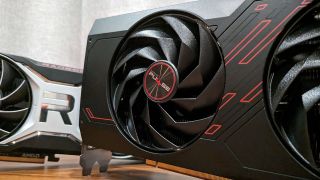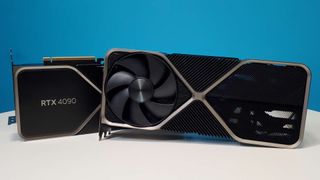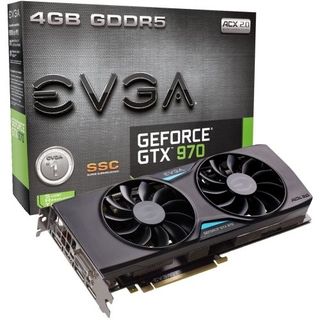AMD rumoured to favour future AI chip production over GPUs but it's probably no reason to panic
A familiar scare story, but we're not terribly worried.

Italian tech website Chips 'n Bits reckons it has it on good authority that AMD will "sacrifice next Radeon gaming GPUs (RX 8000) output at TSMC in order to pump up FPGA and GPGPU production."
That more or less boils down to allocating more production capacity to AI chips than graphics cards. And it feeds into a not unreasonable fear narrative around GPU supply for gaming.
What with the crypto craze, then the pandemic and now AI, gamers have definitely had it pretty tough of late. Graphics cards prices spiked to truly ridiculous levels for 18 months or so during the pandemic. Even now, the value proposition of many current cards looks poor, though AMD's new Radeon RX 7800 XT has helped a little.
Meanwhile, we've already seen reports of AMD cancelling the high-end models of its next-gen RDNA 4 family, likely to be known as the Radeon RX 8000 Series. Indeed, some sources have reported that Nvidia has virtually ceased production of its current RTX 40 GPUs in favour of cranking out more of those money-spinner H100 AI chips. So this is already happening, people.
At least, that's the implication. But is it? And if it is, how much does it matter? There's little doubt that Nvidia is absolutely coining it with those H100 GPUs for AI inferencing. And it absolutely stands to reason that Nvidia would favour production capacity at TSMC, the Taiwanese chip foundry that manufactures all of AMD and Nvidia's current GPUs, for those more profitable chips.

Production capacity at TSMC is finite and Nvidia currently can't keep up with demand for the H100. So, every GPU made for gaming eats into the larger profits that can be made from AI chips.
However, check online and you'll have absolutely no difficulty buying any Nvidia RTX 40 GPU. From the entry-level RTX 4060 wimp to the RTX 4090 monster, they're all widely available.
The biggest gaming news, reviews and hardware deals
Keep up to date with the most important stories and the best deals, as picked by the PC Gamer team.
Of course, some would argue that RTX 40 pricing is so high somehow because of the AI boom. That may have some influence, but it's only indirect at best. AI outfits aren't buying up container loads of RTX 4060 Ti and RTX 4070 boards, which is the kind of thing that definitely did happen during the peak of the crypto-mining craze.
So, there's no massive distortion in supply and demand when it comes to gaming graphics cards right now. But if the AI boom continues, what there almost certainly will be is a shift in priorities.

A little earlier this year, we reported that Nvidia's own roadmaps indicated that its next gen RTX 50 GPUs had been pushed out into 2025. Given a "normal" GPU cycle, you'd expect RTX 50 cards to appear next year.
There's a good chance at least part of the reason for that is to allow more of TSMC's upcoming 3N node capacity to be used for more profitable AI chips. By 2025, TSMC should have built up significant 3N capacity, perhaps including the increasingly infamous Arizona fab coming online, allowing Nvidia to keep up with AI demand at the same time as cranking out gaming GPUs.
If so, a similar process will no doubt happen at AMD. It wants in on the AI game and if its 146-billion transistor Instinct MI300 AI beast gains traction, it will surely be subject to the same market forces as Nvidia.
But here's the thing. If it does turn out that AI chips hog all the cutting-edge fab capacity for the foreseeable, well, that's a one-time hit. Gaming GPUs can fall back to one node behind AI chips, or hold back for a cycle depending on how you want to view it, and then move forward in lockstep.

Best CPU for gaming: The top chips from Intel and AMD
Best gaming motherboard: The right boards
Best graphics card: Your perfect pixel-pusher awaits
Best SSD for gaming: Get into the game ahead of the rest
And lest you have forgotten, Nvidia has managed a very decent step forward sticking to the same node with its Maxwell generation of GPUs back in 2014. They retained the same 28nm production tech as Kepler GPUs. But a focus on design and efficiency with Maxwell still netted the sort of performance gains you'd normally expect with a node shrink.
In other words, even if gaming GPUs are forced to fall back a node to allow more profitable chips to hog all the cutting-edge production capacity, that one-off hit needn't actually mean missing a new generation of faster GPUs.
Most importantly, it definitely doesn't follow that an ongoing AI boom will mean a return of that ridiculous pandemic GPU pricing. So, things aren't ideal. Graphics cards are still too pricey and the AI boom isn't helping. But there's probably no reason to panic.

Jeremy has been writing about technology and PCs since the 90nm Netburst era (Google it!) and enjoys nothing more than a serious dissertation on the finer points of monitor input lag and overshoot followed by a forensic examination of advanced lithography. Or maybe he just likes machines that go “ping!” He also has a thing for tennis and cars.
Most Popular






